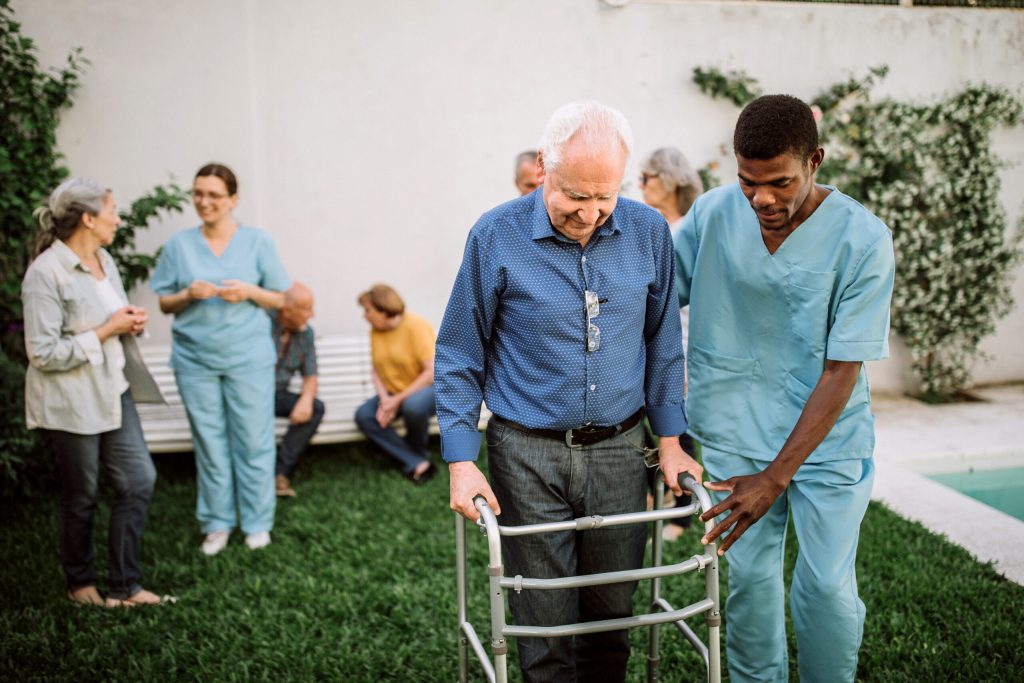Living alone can be great—or lonely and unsafe. If you or a loved one starts to feel like solo living is becoming more of a burden than a blessing, it may be time to consider assisted living.
These communities provide a range of services, such as meals, housekeeping and activities. Seniors often find a renewed sense of engagement and well-being in assisted living, too. Here’s what you should know about this type of residence:
What Is an Assisted Living Facility?
Assisted living facilities are residences designed for people who are independent but need some help with daily activities. They are part of a continuum of care that provides housing, personal care services and health care. These facilities can be freestanding communities, part of a retirement community or integrated with nursing homes or hospitals. Assisted living maximizes the dignity and independence of residents while also providing 24-hour supervision.

Who Lives in Assisted Living?
Most assisted living residents are older adults. More than half of them are at least 85 years old. While people in assisted living don’t require skilled nursing around the clock, they do need help with activities of daily living (ADLs). About 40% of residents live with Alzheimer’s disease or other forms of dementia.
Long-Term vs. Short-Term Assisted Living
Most assisted living facilities only offer long-term stays. However, some communities offer short-term respite care. They may also offer options for people who want to try out the community before they commit.
What to Consider When Searching for an Assisted Living Facility
Finding a new home can be daunting, especially when care-giving is part of the equation. However, there are ways to find the best assisted living community to meet your family’s needs. As you visit different communities, here are specific factors to consider.
Care Offerings
Assisted living facilities offer a variety of services that can include:
-
Up to three meals a day
-
Assistance with personal care
-
Help with medications and housekeeping
-
24-hour supervision and on-site staff
-
Social activities
You might notice something missing from that list.
Medical care isn’t part of the usual portfolio of care. However, assisted living staff can monitor residents and help coordinate services with outside health care providers. It’s important to explore how the facility handles these interactions.
Find out if the assisted living community is associated with a specific medical facility. Sometimes residents are required to go to that practice. Additionally, investigate what policies are in place should emergency care be needed.
Facilities
Accommodations vary among assisted living facilities. Different options may be available within one community as well. Kitchenettes, private rooms and larger apartments are common, and residents typically choose one over the other based on their lifestyle preferences and budget. It’s also important to consider:
-
Utilities. Are telephone, cable and internet services available in personal spaces? If so, what is the billing model?
-
Bathrooms. Are bathrooms designed to accommodate mobility devices? Are there safety features like grab bars?
-
Furnishings. Do residents bring their own furniture or do the living spaces come furnished?
-
Guests. Are loved ones allowed to stay overnight? If so, is there any related cost?
No matter what personal living space meets your needs, pay attention to the common areas and ease of getting around. Good lighting, clear areas to walk both indoors and outdoors, and comfortable places to sit help keep residents safe and engaged.
Amenities and Activities
Assisted living is designed to meet both the physical and emotional needs of residents. Most facilities create a care plan for each resident based on their individual needs, interests and desires.
When you’re searching for assisted living, consider what life-enhancing services and activities are available. Amenities can include:
-
Housekeeping services
-
Recreational activities
-
Salon services
-
Fitness or wellness centres
-
Spiritual resources or services
-
Regularly scheduled activities like volunteer work or lifelong learning
-
Transportation to events
-
Pet-friendly policies
Examine dining services as well. Do menus vary, and can residents make requests? What hours are dining facilities open? The path to a person’s heart is often through the stomach.

Caregivers and Staff
People and personalities make a community, so ask about staff training, policies and background checks. It’s also important to trust your gut.
Certifications
Don’t overlook the agencies that register, license or certify assisted living communities. A department of the state will issue and renew licenses for these facilities. Make sure the community you select is in good standing and properly accredited.
Cost
Assisted living doesn’t come cheap. According to AHCA and NCAL, the median rate for assisted living is $4,000 a month, or $48,000 a year. Most residents use some form of private pay—like long-term care insurance or their personal savings—to cover assisted living expenses.
If you’re trying to determine how to pay for assisted living care, talk to your financial advisor or state Medicaid board. Assisted living employees can share resources to help you make smart choices, too.








I appreciate you mentioning how accommodations differ between assisted living facilities. As you said, multiple solutions might even be accessible within the same neighborhood. I’ll be sure to tell my husband about this since we were going to look into assisted living facilities for his aunt. In order to find the best facility for his aunt needs, I’ll make sure to keep this in mind.